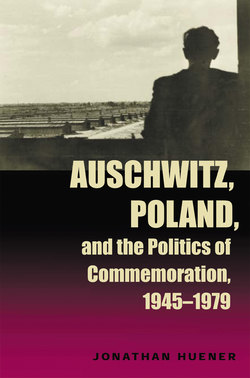Auschwitz, Poland, and the Politics of Commemoration, 1945–1979

Реклама. ООО «ЛитРес», ИНН: 7719571260.
Оглавление
Jonathan Huener. Auschwitz, Poland, and the Politics of Commemoration, 1945–1979
Отрывок из книги
Auschwitz, Poland, and the Politics of Commemoration, 1945–1979
Series Editor: John J. Bukowczyk
.....
When Eichmann visited Auschwitz, he acquainted Höss with the workings of gas chambers used at “euthanasia” installations and the mobile gassing vans used at various locations. Both used carbon monoxide as the poison, but neither, it was decided, would be suitable for the sort of mass extermination that was to be undertaken at Auschwitz. Instead, a preparation of hydrogen cyanide normally used as a disinfectant, fumigator, and delousing agent was chosen. The product, commercially marketed as “Zyklon-B,” was readily available at the Auschwitz complex. While Höss was away, his deputy Karl Fritzsch used Zyklon-B as a killing agent for humans on a group of Soviet prisoners. When the commandant returned, he supervised the first large-scale killing in the cellar of the base camp’s Block 11, where approximately six hundred Soviet prisoners of war and two hundred fifty other prisoners were gassed to death. After witnessing this second experiment, Höss became convinced that death by Zyklon-B gas would be the most efficient and appropriate means of killing Jews at Auschwitz in the future, and the mortuary of the “old crematorium” (later named Crematorium I) was converted to a gas chamber. It was first used on transports of Jewish deportees in February 1942.
Corpses of the victims of gassings at the base camp, as well as those who had been gassed at Birkenau, were buried in pits near the Birkenau bunkers. In the summer of 1942, however, SS Colonel Paul Blobel from Eichmann’s RSHA arrived at Auschwitz with orders that the corpses be removed. From September until late November 1942 a mass exhumation and incineration effort took place, as pyres of up to two thousand bodies each and, later, mass incineration pits were used to dispose of more than one hundred thousand corpses.
.....